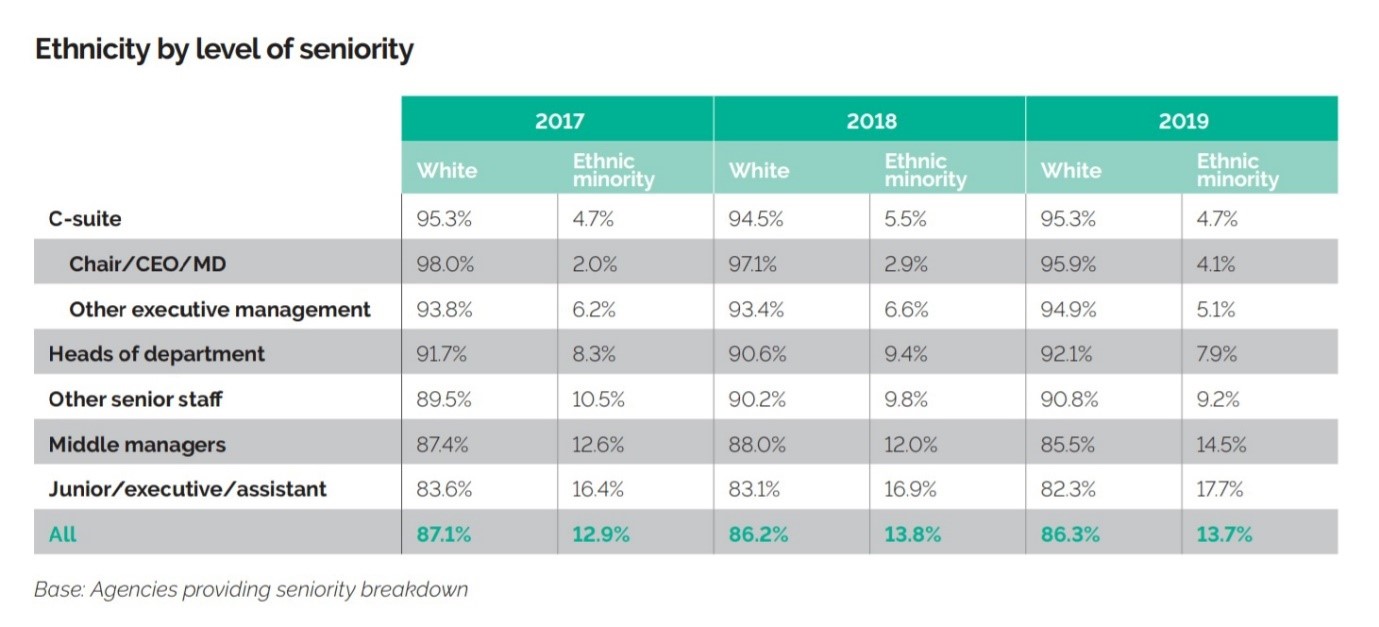The advertising industry has the power to influence culture through what it creates, and, says Jay Richards, it also needs to reflect the reality of a world that is 70% non-white.
You’re on your flight to LA, you stand up to stretch your legs and as you make your way through the plane you notice that one of the wings has a mechanical problem and is on fire. You ask yourself, how has no one noticed this? How have we got this far with such a massive glaring problem? You run to ask for help from the flight attendants because you realise not only is your life in jeopardy but the lives of all the passengers onboard. As you reach the flight attendant they inform you, don’t worry it’s always been like that, it’s just the way it is, and could you please return to your seat. Confused but oddly reassured by their response you head back to your seat and continue your descent into eventual disaster.
Black Lives Matter
This article is part of an ongoing WARC series focused on educating brand marketers on diversity and activism, in light of the recent progressive steps made with the Black Lives Matter movement.
Dramatic right? It might be how my brain is wired but when I was thinking about the current state of our industry, this is the metaphor that came to mind. We’re all on this flight, heading to the exact same destination but the plane is broken and on fire, yet we’re all just reassuring each other everything will be ok as we plummet to our doom. Advertising is our beautifully flawed yet incredibly powerful industry. And right now, we have an incredible opportunity to drive positive change. Using our creativity, our resources and our talent we are in a powerful position to, for example, raise awareness about social injustice and educate people about racial inequality. Marketers have the power to influence culture through what we create in ways that governments and political leaders only wish they could. Whether with humour, education or brutal honesty we can alter the entire trajectory of a global conversation.
The archetype of a person working in the UK ad industry is typically middle class and white and (mostly male), which is great, if you’re middle class, and white. According to the latest IPA Census data the proportion of staff in its UK member agencies from black, Asian and minority-ethnic backgrounds fell fractionally, year-on-year.

Source: 2009 IPA Agency Census Report
In the United States, a 2019 study by the ANA’s Alliance for Inclusive and Multicultural Marketing found that ethnic diversity continues to be poor, among its member agencies, especially for African-American/Black and Hispanic/Latino.
And LA-based black creative coalition, Three’s A Crowd, has issued a call-to-action. It wants to see the advertising industry leadership proportionately reflect the US Black population as a whole by 2023. According to Pew Research black people comprise 13% of the US population, yet only 8.1% of people working in advertising are black, say the group.
If we could shrink the earth’s population to a village of precisely 100 people, with all the existing human ratios remaining the same, 70 people would be non-white (source: UNICEF). To put it plainly, we live in a world that is 70% non-white, it’s time for our industry to reflect that world.
The brutal murders of Breonna Taylor and George Floyd has shone a light on white supremacy like never before. I’m thankful for the open conversations I’ve been having with my white friends about our lived experiences. Of course, COVID-19, has played a huge part in forcing humanity to face its racist past as we can no longer ignore the role slavery and systemic racism plays in our everyday lives.
Diversity improves the bottom line
I could write a million words about my thoughts on white supremacy and systemic racism but my mission in this post is to talk about one thing, diversity is good for your bottom line.
It is statistically proven that having a diverse group of people trying to solve a problem, create a campaign or just within a team is good for business. McKinsey reports that “companies in the top quartile for ethnic and cultural diversity outperformed those in the fourth quartile by 36 percent in profitability.” If a large percentage of our industry is hiring from the exact same pools of talent then it shouldn’t be a shock to us that we're creating campaigns, products and services that look like carbon copies of each other.
Let’s just look at this numerically, if you and I were in a room with 100 other people and we needed to choose 10 people to create a campaign to appeal to the other 88, it would be statistically insane to not ensure that our 10 choices were truly diverse in all senses of the term.
Diversity isn’t a nice-to-have, it’s a must have, if our industry is to avoid plummeting to its untimely demise somewhere over the North Atlantic Ocean. Diversity in our teams leads to diversity of thought which means we build beautiful branding, campaigns, products and services that actually appeal to the entirety of humanity and not a small subsection.
The archaic concept of hiring from the same universities or hiring folks that all look the same just pours more gasoline onto our burning wings. We’re on fire with a busted wing my friends, it’s time to put the fire out and fix the problems we have, for all our sakes.
It’s time to be the creatives we all claim to be and dream up solutions to solve our collective problem, diversity.

